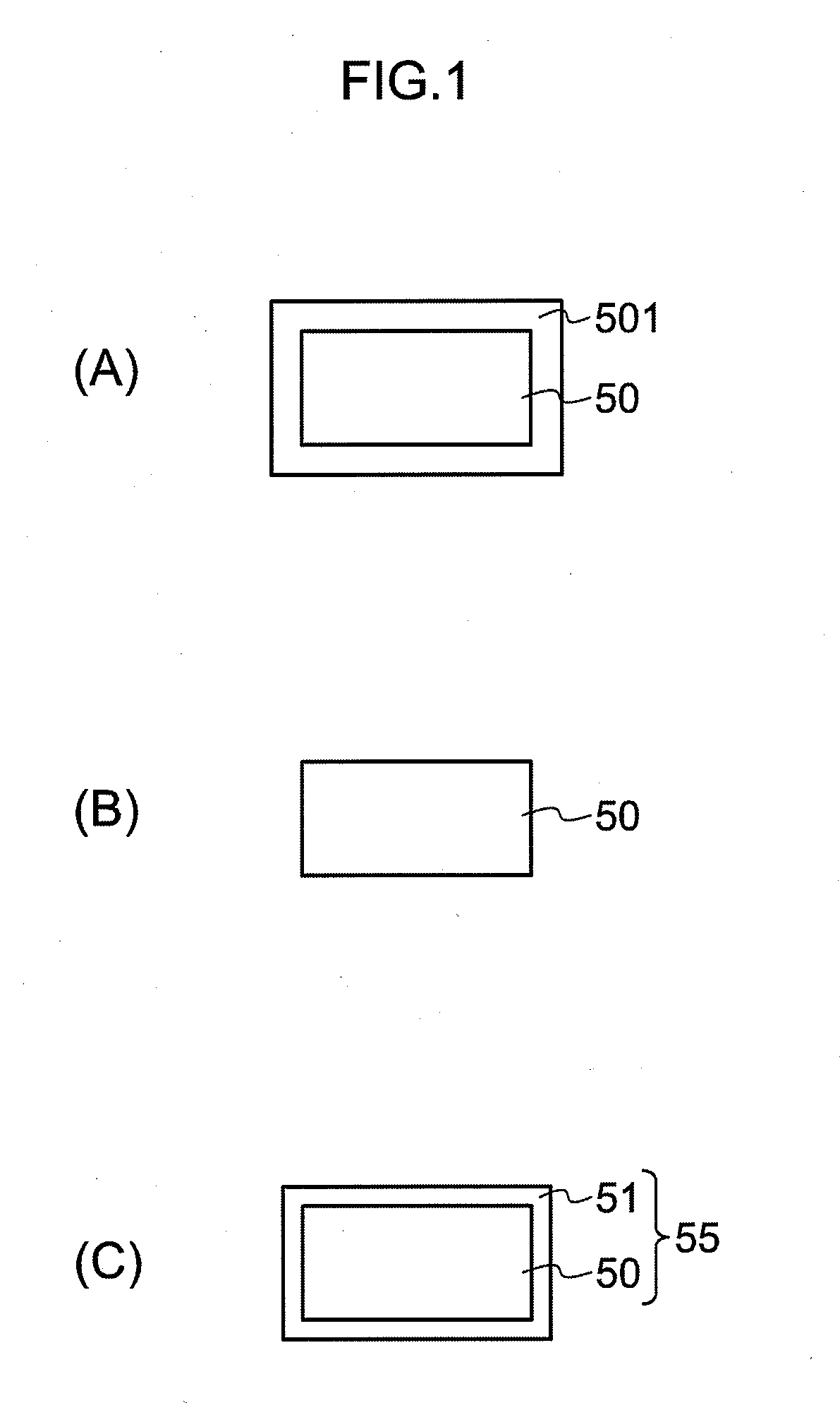Solder material, method for manufacturing the same, joined body, method for manufacturing the same, power semiconductor module, and method for manufacturing the same
a technology of solder material and manufacturing method, which is applied in the direction of manufacturing tools, soldering devices, and capacitors, can solve the problems of high cost and difficult application to consumer devices, and achieve the effect of improving the wetness of solder
- Summary
- Abstract
- Description
- Claims
- Application Information
AI Technical Summary
Benefits of technology
Problems solved by technology
Method used
Image
Examples
example 1
[0303]According to FIG. 7 (A) (B), a power semiconductor element and an insulating substrate were joined together with a Zn based solder material 55 to prepare an evaluation test specimen-1 having the structure shown in FIG. 7 (B).
[0304]
[0305]A power semiconductor element 20 using GaN was prepared, and on the outermost surface of the element, a Ni layer 22 was formed by sputtering. On the surface of the Ni layer 22, an Au layer (not shown in the figure) was formed by sputtering.
[0306]
[0307]Separately, Cu layers 34 and 36 were stuck by brazing onto both sides of a Si3N4 ceramic plate as an insulating substrate 32 to prepare a layered body of Cu layer 34 / Si3N4 layer 32 / Cu layer 36. A Ni layer 38 was formed by plating on the surface of the Cu layer in this layered body to prepare an insulating portion 30. In this plating, a surface not to be plated was protected with a masking sheet or the like.
[0308]
[0309]A solder material including 4% by mass of Al added to zinc (Zn0.96Al0.04 alloy: ...
example 2
[0322]In Example 2, removal of the natural oxide film and subsequent formation of the copper film were conducted by plating, replacing of bias sputtering and sputtering in Example 1.
[0323]A solder material including 4% by mass of Al added to zinc (Zn0.96Al0.04 alloy: melting point 380° C.) was prepared and processed by rolling into a foil of 0.1 mm in thickness. Then, the solder foil was placed in a pretreatment liquid for removing an oxide film, and then dipped in a copper plating liquid. Based on the previously determined relationship between plating thickness and plating time, the plating conditions were regulated such that the plating thickness reached 50 nm.
[0324]After plating, the specimen was used to prepare a joined body in the same manner as in Example 1 to give an evaluation test specimen-3.
[0325]The joined surface of the evaluation test specimen-3 thus obtained was observed in the same manner as in Example 1. As a result, at the joined surface of the evaluation test speci...
example 3
[0326]According to FIG. 8(A) (B), a power semiconductor element and an insulating substrate were joined together with a Zn based solder material 55 to prepare an evaluation test specimen-4 having the structure shown in FIG. 8 (B).
[0327]
[0328]A GaN power semiconductor element 20 having 1 cm2 of a surface to be joined was prepared, and on the outermost surface of the element, a Ni layer 22 was formed by sputtering. On the surface of the Ni layer 22, a Cu layer 24 was formed by sputtering. The thickness of the Ni layer 22 was 0.7 μm, and the thickness of the Cu layer 24 was 50 nm by measurement under an electron microscope.
[0329]
[0330]Meanwhile, Cu layers 34 and 36 were stuck by brazing onto both sides of a Si3N4 ceramic plate as an insulating substrate 32 to prepare a layered body of Cu layer 34 / Si3N4 layer 32 / Cu layer 36.
[0331]A Ni layer 38 was formed by plating on the surface of the Cu layer in the layered body, and a Cu layer 39 was formed by sputtering on the Ni layer 38, to prepa...
PUM
| Property | Measurement | Unit |
|---|---|---|
| thickness | aaaaa | aaaaa |
| thickness | aaaaa | aaaaa |
| thickness | aaaaa | aaaaa |
Abstract
Description
Claims
Application Information
 Login to View More
Login to View More - R&D
- Intellectual Property
- Life Sciences
- Materials
- Tech Scout
- Unparalleled Data Quality
- Higher Quality Content
- 60% Fewer Hallucinations
Browse by: Latest US Patents, China's latest patents, Technical Efficacy Thesaurus, Application Domain, Technology Topic, Popular Technical Reports.
© 2025 PatSnap. All rights reserved.Legal|Privacy policy|Modern Slavery Act Transparency Statement|Sitemap|About US| Contact US: help@patsnap.com



